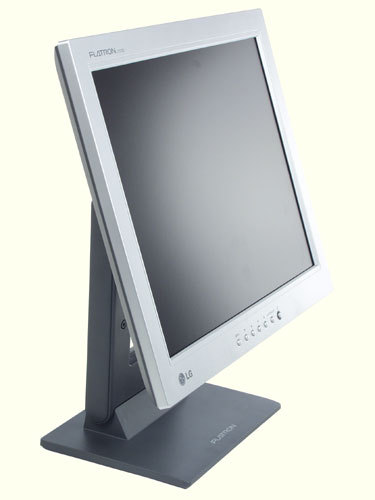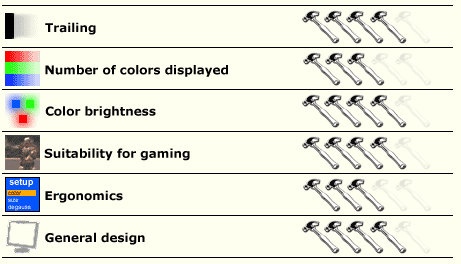15" LCD Comparison Part III: Better and Cheaper
LG Flatron L1510S
LG has also produced a slimline casing. The L1510S is one of these new extra-flat monitors for greater ease of use. When first switched on, the defaults seem to have been correctly adjusted, although, as usual with LG screens, there is a slight tendency to veer toward the blue. The colors are bright and luminous and the white is very pale. There is a slight improvement, however, if one reduces the blue level slightly in the color adjustment menu. The default settings for brightness and contrast are 100 and should not be decreased or the screen will tend to be dark.
When playing games, a noticeable trail is left if there are sharply contrasting colors, such as a lamp showing against a dark background, but in general this is not a serious problem. The good impression it makes is reinforced by the brightness of the colors. The images are very attractive and are comparable to those of the best CRT screens. Ditto for the Net and office applications. Nor does scrolling up and down the screen strain the eyes. Movements do not result in long wakes being left on the screen. Characters are sharp and images are well-defined, clear and attractive.
| Color | Darkest color displayed | Lightest color displayed |
|---|---|---|
| Grey pattern | 1 | 254 |
| Red pattern | 10 | 254 |
| Green pattern | 1 | 250 |
| Blue pattern | 1 | 254 |
The L1510S is an improvement on its predecessor the 15", entry-level 563LE. To have made it even better, the screen should have been brighter. Even though the colors are good in comparison to those of screens of the previous generation, they are not as good as those of the excellent Solarism LM 1503, though admittedly its spec is for 800 cd/m². Since the trailing effect does not seem to be a serious problem for LCDs anymore, the panel manufacturers, and LG in particular because it is the market leader, still need to work on this. When compared to the panels used on the first LCDs, let's hope that the next generation does even better in this area. LG, Samsung, Sharp, etc. now know how to make panels with a brightness in the order of 450 cd/m². Computer monitors should also have this level of brightness.
Get Tom's Hardware's best news and in-depth reviews, straight to your inbox.

